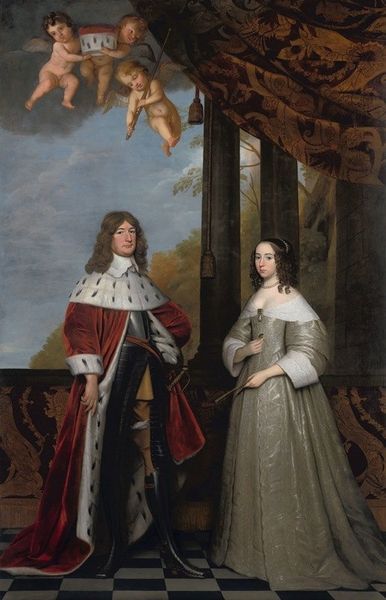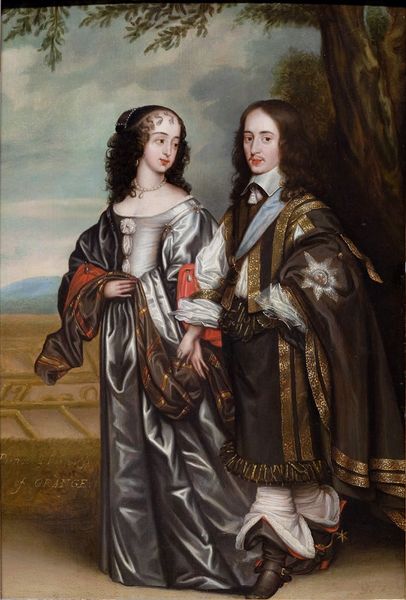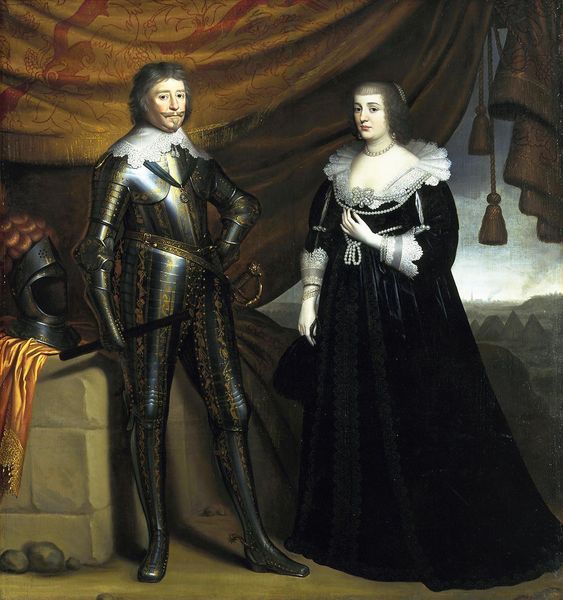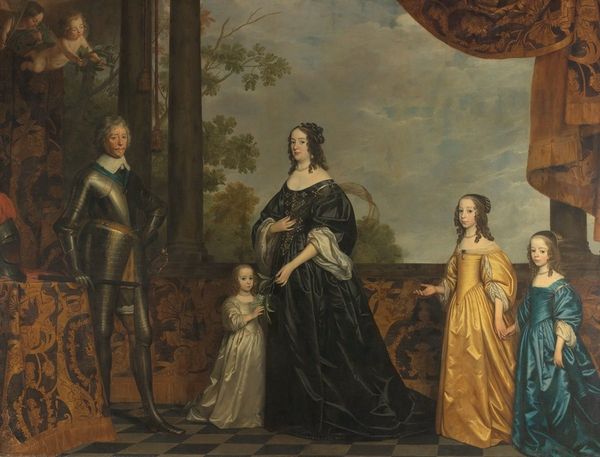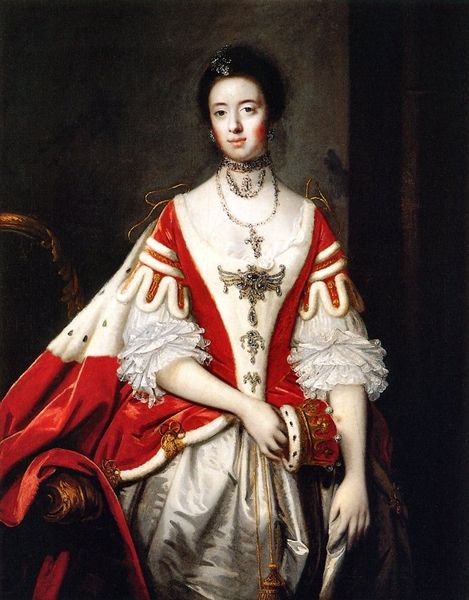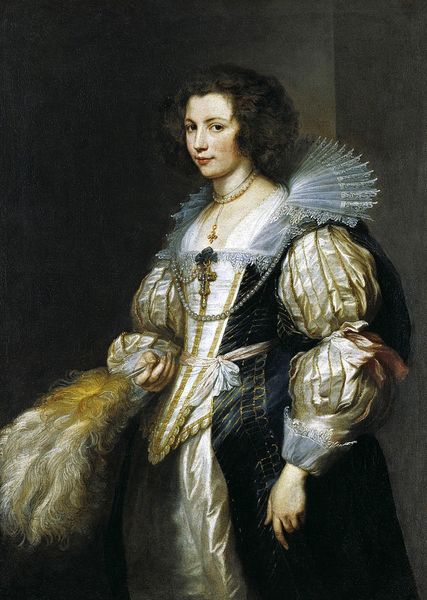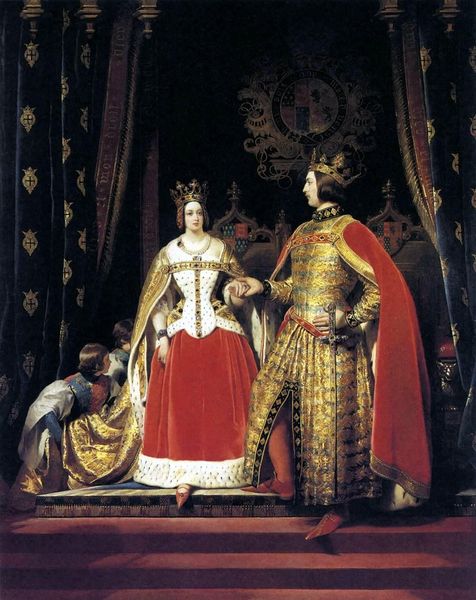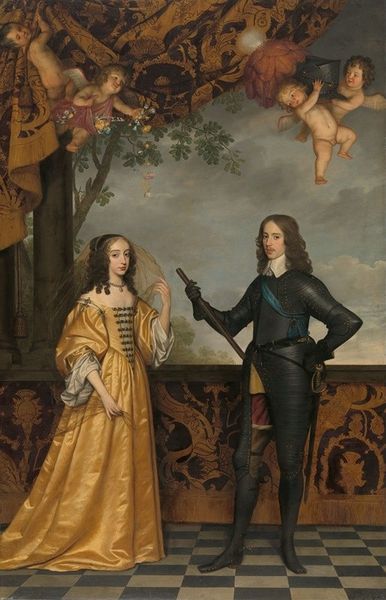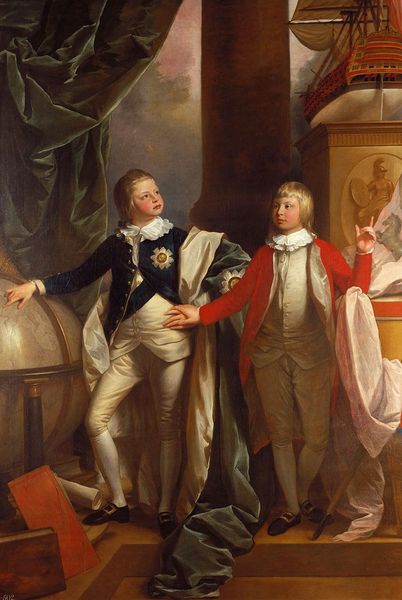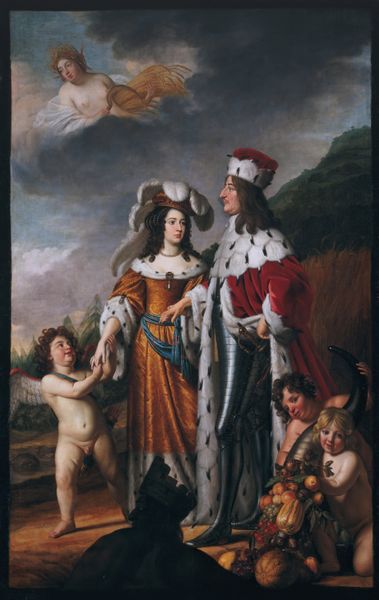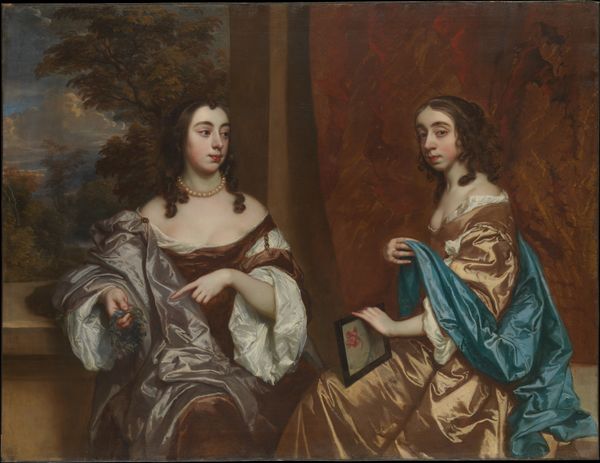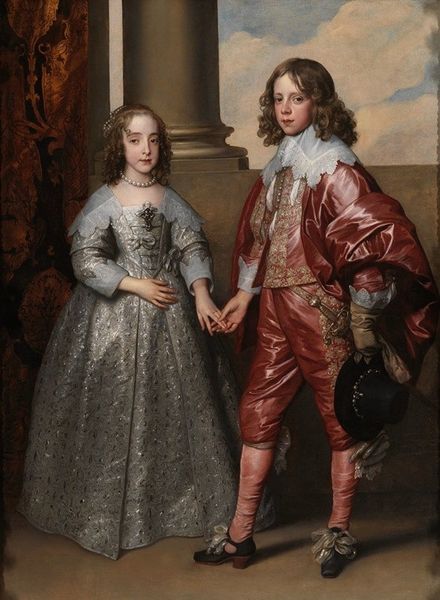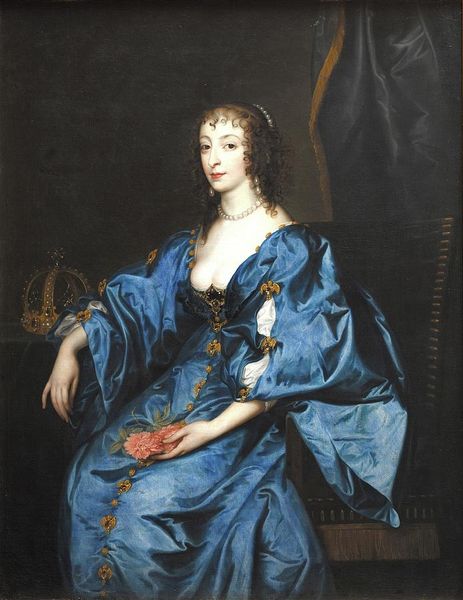
painting, oil-paint
#
portrait
#
baroque
#
painting
#
oil-paint
#
oil painting
#
costume
#
portrait drawing
#
history-painting
#
facial portrait
#
portrait art
#
fine art portrait
#
celebrity portrait
Copyright: Public domain
Gerard van Honthorst created this double portrait of Friedrich Wilhelm I and Louise Henriette using oil paint, a medium that allows for the rich depiction of material surfaces. Notice how Friedrich’s velvet robe, trimmed with ermine, contrasts with his polished steel armor. Beside him, Louise wears a lustrous silk gown, adorned with pearls. Oil paint is particularly well-suited to rendering these contrasting textures: the soft nap of the velvet, the hard gleam of the armor, the fluid drape of the silk. Honthorst’s skill lies not just in capturing likeness, but in conveying the cost, the labour, and the social status embedded in these sumptuous materials. Consider the global trade networks needed to produce these textiles and adornments. The ermine likely came from Russia, the silk from Asia, and the pearls from the Persian Gulf. This painting, then, is not just a portrait of two individuals, but also a reflection of a world of commerce and consumption. By attending to the materiality of this painting, we can understand it as more than just a work of fine art.
Comments
No comments
Be the first to comment and join the conversation on the ultimate creative platform.
